Hello. My name is Christy and I live in suburbia, right smack-dab in the heart of the big city suburbs. In a cute neighborhood with cute little houses in cute little yards. And I mean little yards — postage stamp yards. I’m a wanna-be homesteader, dreaming and planning to buy a few acres one day soon.
Does that resonate with any of you? Are any of you also wanna-be homesteaders living in the big city or the busy suburbs?
You Can Do More Than You Think
While I am severely limited in my homesteading capabilities, believe it or not, I am gardening in my postage stamp yard. With just one 4×4-foot bed, one 4×8-foot bed, and some patio pots, I am harvesting over $500 worth of produce by the end of each season. Last summer I picked over 50 pounds of tomatoes, all from my tiny garden!
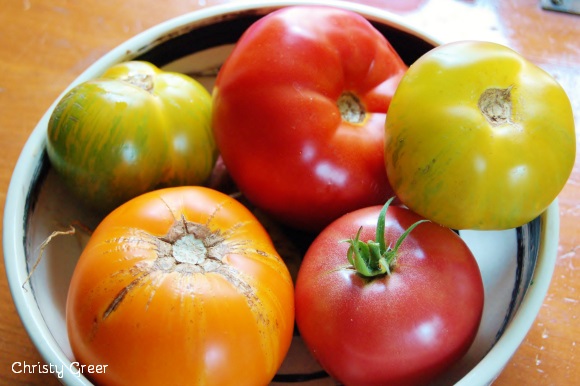
If you had told me a few years ago that I would be harvesting over $500 from my little garden beds, I would have laughed at you! I didn’t know it was even possible. I thought — because of the lack of space — I was limited to a measly garden harvest of a few bowls of tomatoes, a bit of lettuce, some peppers, and a few herbs at best. How wrong I was!
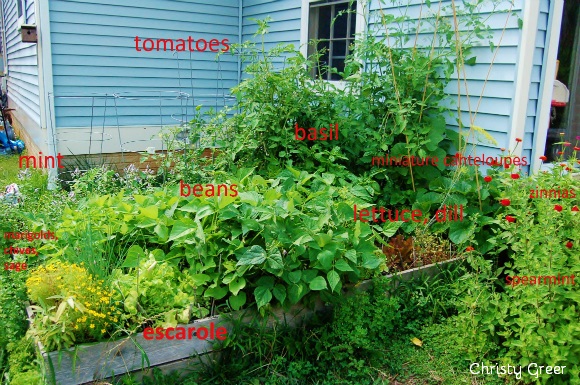
I am no expert gardener, trust me. Four years ago I could hardly keep an indoor plant alive, let alone grow food. But a few books later, and with three productive gardens now under my belt, I have learned a lot about how to garden in small spaces. The wonderful thing is, I am learning even more each year.
The Time Is Now!
If you are a wanna-be homesteader, or you hope to homestead one day, now is the time to begin! The knowledge and skills gained from growing a small garden will prove valuable to you when you have a large garden one day. The experience you have now will build a strong foundation for you in your future gardening.
Don’t wait for “one day.” Start gaining experience, skills and knowledge right now. Of course, some people naturally seem to have a green thumb. (Sadly, not me.) I have realized, however, that gardening can be learned, like any craft or skill. And like any craft or skill, there is much to learn if you want to do it well. So dig in (pun intended!) and start learning now.
And while you’re at it, let your kids start their own simple garden, too.
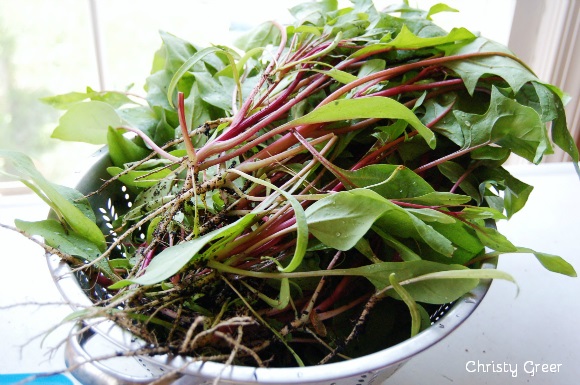
Gardening in Small Spaces
Many people long to garden but are discouraged because they think they lack the space. Don’t let this be you! You can grow your own food as long as you have a little bit of sunlight. On a patio, balcony, front porch, back porch, in raised beds, in the ground, in pots and containers of all sorts, even in a sunny windowsill.
If you are brand-new to gardening and just want to get your feet wet, I recommend growing two things: lettuce and herbs. Both are very easy to grow and grow just as well in pots as in the ground — sometimes better in pots, in fact.
You will need to look at the issues of light and location, choose pots and obtain proper soil, and decide whether to grow lettuce, grow herbs, or both. If you want to try your hand at more, here are some of my favorite plants to grow due to ease and proliferation.
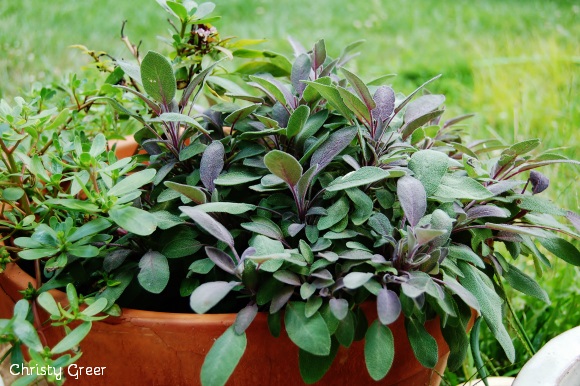
It is important to consider the seeds you buy. Heirloom produce is often the best in flavor and beauty, and heirloom seeds won’t be GMO. Many heirloom plants, especially if you can find some indigenous to your neck of the woods, can be very hardy and pest-resistant.
Also, soil quality is extremely important. You will most likely need to amend your soil if you are creating an in-ground garden. A healthy, nutrient-rich soil will produce healthy, nutritious plants and produce. Strong, healthy plants produce more, resist disease, and aren’t as affected by pests. Your soil is your greatest ally.
If you’re concerned about pests, there are natural ways to deal with most of them, and it’s much easier to do so with a small garden. Simple things will discourage and repel common pests like squirrels, cats, bugs, not to mention deer and rabbits. You can be proactive, planting specific herbs around and throughout your garden that are natural deterrents to particular pests, and growing other herbs and plants that will attract useful pollinators.
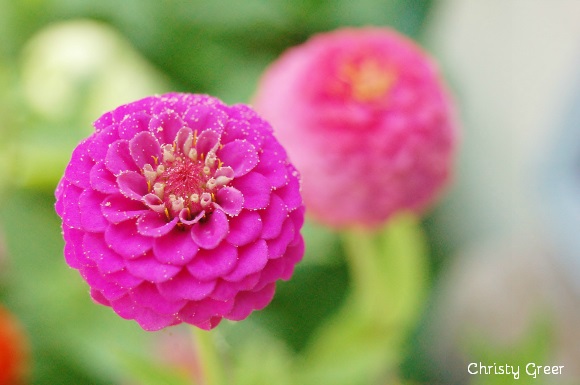
Read Up Now
For me, I had to read gardening books in order to gain basic gardening knowledge. I had no idea how much room a tomato plant or a head of lettuce needed. I didn’t know when to plant radishes or zucchini. I didn’t even know that you could plant multiple crops successively in one season, one after the other, to capitalize on the space in a small garden. I didn’t know not to plant the same thing in the same place year after year.
Determined to have a productive garden, one year I spent Christmas vacation reading Square Foot Gardening. In all the excellent books out there, this one really clicked with me. The author shares the basics of gardening, along with more in-depth information. He has simple charts detailing when to plant which crops and how to plant successively. He even offers specific, detailed garden plans you can use. He talks about soil and plant health… really, he touches on everything novice gardeners need to know, without overwhelming them. I believe this book has become a classic because of all this!
Although I don’t follow his system completely, each winter I read the book again and continue to build my basic gardening knowledge.
If you’re looking to creatively use space or re-purpose old household items for use in your garden, I found Vertical Vegetable Gardening to be a good resource with a lot of innovative ideas and tips. The author explains how to grow plants in just about every container imaginable. Don’t let a lack of money hinder you from starting a garden, because there’s no need to spend money buying a lot of pots. It’s likely you have plenty of containers around the house to at least start you off with a container garden.
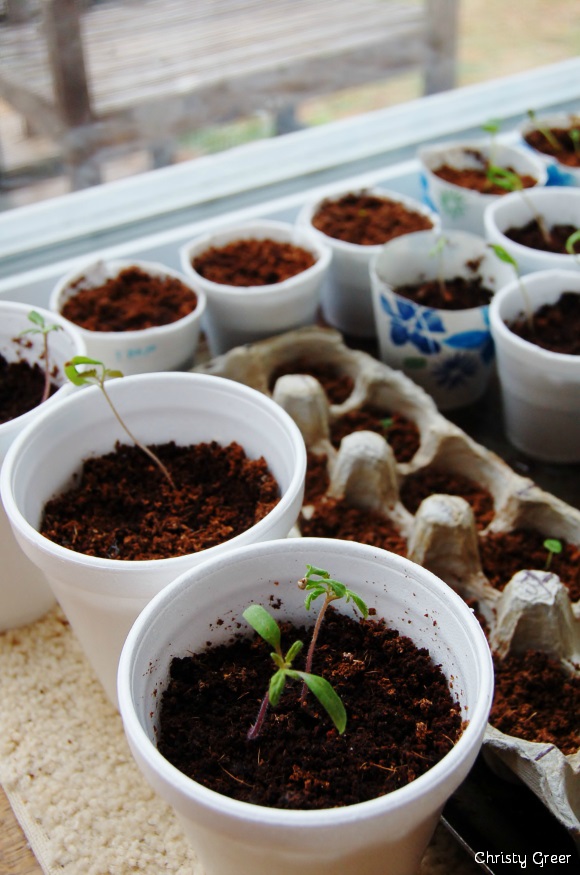
So, here I am in cold, dreary January starting to plan this year’s garden. I hope you join me and begin to plan your garden, too. There’s a lot to be done and it’s almost time to plant seeds for those early spring crops. There’s nothing like starting the first seeds in the cold of winter and watching the tender green shoots pop up. The little bit of spring will brighten your days while it’s still cold and dark outside. I love it and I look forward to it each year.
Will this be your first garden this year, or are you an experienced gardener? How big is your garden and what will you be growing this year? If you’re an experienced gardener, I would particularly love to hear which heirloom varieties are your favorites, or any advice you have for a new gardener. Please share!
We only recommend products and services we wholeheartedly endorse. This post may contain special links through which we earn a small commission if you make a purchase (though your price is the same).


Thank you for the article and book recommendations. I went over to Amazon and got a copy of the Square Foot Gardening book, as this will be my first year gardening. I purchased Heirloom seeds last year, but was unable to plant, due to my grandmother breaking her ankle. I am ready to learn and grow my own food!
Just curious, when do you begin your starters?
Thanks!
Brittney, I’m so excited for you as begin this new journey of gardening! When you begin planting seeds depends entirely on what you are growing and where you live. Since you mentioned that you bought a copy of Square Food Gardening, my suggestion is to wait until it arrives and look up each of your seeds in there because there are charts to show you when you should start which seeds and when to transplant them into the garden, as well as which seeds do best being planted straight into a garden (rather than started as a seedling). For instance, lettuce seeds can be started much earlier than zucchini seeds, and spinach often grows best when planted straight into the ground.
The one piece of information you will need to know is your area’s frost free date, which varies drastically based on where you in the US you live. That is the date at which point you can safely assume there will be no more frosts. When you plant seeds/seedlings is based upon that date. You can go to to search by your zip code and find your frost free date.
I hope that helps! I wish you the best with your garden, and I hope you enjoy your experience!
The link I wanted to send you to got left out…I guess I can’t leave a link in the comments. So, if you want, just email me and I can send you the link to find your frost-free date, or just google it and sites that will help you will come up. 🙂
I’m intrigued by your $500 per season yield?! I’m an urbanite too, and started a very simple backyard vegetable garden for the first time a couple of years ago. Are you planting throughout the season (adding additional seed as you go) to maximize the yield?
Also, How in the world do you keep squirrels, opossums from stealing all your beautiful produce?
Hi, Dena! Yes, I do plant throughout the season. Some short growing crops like radishes, green onions and lettuce get replaced with other crops…sometimes tomatoes which will last the rest of the season for me, or sometimes with more short growing crops like bush beans or more radishes, lettuce and green onions. Pretty much every spot of my garden has at least 2-4 items that grow in it by the end of the growing season.
As far as keeping squirrels away, I actually link to a post about that in this post above, right before the beautiful pink zinnia photo. I don’t have a problem with opossums, but I also reference deer, rabbits and cats right there as well with links to common deterrents to each of those pests. Maybe one of those would help with opossums. I also have raised beds, which I’ve found to be a slight deterrent to small animals like rabbits…perhaps opossums too? I check my garden daily and pick daily, which I think also helps. At times I have lost some low-hanging tomatoes or other produce to animals, but for the most part, we get almost everything we grow.
And in case you’re curious, I determine that $500+ by simply weighing what I harvest and comparing it to the cost of buying that item (just conventional, not organic) at my local grocery store around the corner.
Missed the link on the first read, so thanks for redirecting me – “planting” sticks to keep squirrels away, huh? I’m so trying that! 🙂
Thanks for the detailed post and reply to encourage more novice gardeners like myself to keep working at it!
You’re welcome, Dena! Planting sticks has worked for a few years now. Such an easy trick and so effective–squirrels in my yard but not in my garden, yay! I’m so happy to hear you are encouraged to garden. That is my hope! I’ve benefitted so much from my little garden, and I want to share that with others and help them along their way. Best wishes on your gardening this season! 🙂
Thanks so much for the encouragement. I am SO happy to hear that, 1) You are successful with a small space, and 2) You used to have problems getting indoor plants to grow. I still have that problem! I hope to overcome it. 🙂
I have the same question as Brittney. When do I start? And if I start from seed, do I HAVE to start indoors? I live in the Northeast, so it’s a little chilly outside, so I am assuming to DO have to start indoors?
Kathleen, yes, I used to have so much trouble just keeping a house plant alive! I was determined about 6 years ago to have houseplants in my house to help clean the air. So I went to the nursery and explained my “problem” and asked for a really easy plant. It took me 3 trips to the nursery (and two dead plants) to finally find one I could keep alive. Once that one was alive and healthy for a few months, I bought one more plant, and slowly added until I had several flourishing in my house. So keep trying!!
I don’t know if you saw the answer I gave Brittney (above), but when to start varies greatly but what you want to plant and where you live. One reason why I like (and recommend) Square Foot Gardening is that there are charts in that book listing all the basic plants–explaining which to start from seed and transplant and which to start in the ground, when to plant them and when to harvest them. I refer back to those charts every year. You do need to know your area’s frost-free date, and you can find that by going to .
If you are starting seedlings, you will start indoors. If you are going to plant straight into the ground, you will start outside right in your garden. You may want to check out the links I included above about starting with lettuce and herbs, or the easiest plants to grow–all the links are right above under the section called “Gardening in Small Spaces”, or right above the photo of the pot of herbs.
I’m sorry I just realized I can’t leave a link in the comments. To find your frost-free date just google it and lots of sites will come up that can help you. Or, feel free to contact me via my blog (info at bottom of this post) and I can send you my favorite site for that.
Thanks so much!
Thanks for these recommendations and tips! I’m interested in buying Square Foot Gardening, but I’m wondering if it written mostly for gardeners in the US or worldwide (multiple climates)? Do you know of any resources (books, websites, etc) that cover gardening in more than just US climates? I ask because I’m a US expat living in Singapore, which is tropical. Like most people here, we live in a small flat several floors above ground, so we have extremely limited space. Any advice, recommendations, etc for us would be sooo helpful! (I used to kill bamboo, which I’m told is hard to do.) Thanks again!
Robin, I would say Square Foot Gardening may not be very helpful for a tropical climate. There would still be things you would learn from it, like good information about soil and watering and ways to grow various types of plants in small spaces, but it is geared toward having spring, summer and fall crops. I’m sorry I don’t have any recommendations on books for tropical climates. I’ve never looked into that.
As far as somewhere to start, I’d recommend herbs. There should be some indigenous herbs that should be easy to grow. Right now I’m thinking perhaps lemongrass–I grew that one year and had a massive plant (we had a particularly hot summer, which is why I think it thrived that year). Herbs are generally easy to grow, especially if you choose indigenous herbs to your area. Greens/lettuces are also easy to grow, especially if you just grow them small as leaves not heads. (Just sprinkle in lots of seed, let them grow anywhere from 2-6 inches, then trim and eat.) It’s probably too hot to grow a head of lettuce.
I also did a quick google search and landed on a website you might want to look at for some ideas of plants that grow well in tropical climates. It’s tropicalpermaculture dot com.
Christy – you are perfectly right about how small gardens help you get ready to plant bigger gardens. We were married for thirteen years before we bought our first house, but in ninety percent of the places we lived, I grew what I could in some of the smallest places and often with only one or two plants of each variety we wanted to grow. I picked up all sorts of ideas from articles, people and a few books (pre-internet days) that help me now with the garden I have. It’s still not very big compared to many other people’s I know because we have only half an acre. But it produces a lot of what we eat and all year long. You can do more than you realize with a small space.
~Melisa
PS. One tip about when to plant is to look at how many days to harvest for all your seeds. Decide when you want to harvest, and count back to when you need to plant or start the seeds. If you like to have family vacations in the summer, you don’t want to be gone when your garden is ready to be picked. Or you might want to stagger your harvesting so that all your, say, tomatoes don’t come in at the same time. The back of your seed packets offer a lot of help with germination/plant/harvest times as well as spacing and planting depths. 🙂
Melisa, thanks for sharing your story!
Wow! What an amazingly gorgeous garden you have. You so remind me of Diana at My Humble Kitchen with your incredible green thumb. I have been reluctant to try my hand at more than just a small container herb garden, but your wonderful advice and book recommendations have me thinking maybe I should at least give container gardening more of a try this spring. I’d love to do a 4×4-foot area, but because our backyard is essentially concrete (we have pool in the back) and our side yard only receives partial sunlight, I am really limited to growing in containers. Of course, I am open to your advice. 🙂
Kelly, your partial sun might actually be a great place for you to grow, especially if you live in a mild climate. There will be shade for plants that otherwise might get too much sun/heat. You might try some lettuces or greens, and many herbs do well in partial sun too. As far as containers go, you can grow just about anything in a container, though some require more knowledge and care than others. Cherry tomatoes and other miniature tomatoes do well in containers, zucchini and other squashes can do well in containers, especially if you pick the produce when small, ground cherries do well in containers, and lettuces, herbs, radishes, green onions, and spinach also do well. When using containers, make sure you use potting soil as it’s much lighter in composition which is necessary for containers, add compost before planting. Hope that helps!
Thank you so much for taking time to give some tips. Love your ideas. Okay, I am going to give it a go! 🙂
The beds don’t have to be 4×4′, they could be less than or more than, just don’t go wider than 4′ as its too far to reach. You could build a bed 1′ wide by however long and use it as a border. You can even add angles to the beds for say a corner. Last year I built a “tower” four sides, three feet square and tapering as it rose to a point about six feet high for a friend. She planted a variety of veggies and flowers in it.
I have the space, I have the books, I don’t have the plan. I get intimidated when it comes time to plant and never see the true potential. Currently i have 3 4″x4″, 1 4″x 8″ in my yard and then 1 4″x12″ and 1 4″x6″ at a community garden. I need the plan – someone to say – plant x,y z in each bead and I would be good to go.
Try growing the things you like to eat first, then search online for “companion plants”, those being plants that grow well and benefit from others. If you’re in a community garden ask those around you what they grow.
This will be our third year with our square foot garden. We didn’t use Mel’s mix (sorry Mel) as it was just too expensive. I filled the first two beds, both 4×10′, with a 50/50 mix of topsoil and compost and mixed in a little chicken manure (not too much to it will “burn” the garden) and out tomatoes were CRAZY huge and we knew nothing about trellising or pruning them. It was a mess… The second year we rotated them to the other bed and pruned and trellised them and had much better success. Last year we put our efforts into expanding, moving a fence that keeps the dogs out and adding two 4×12′ beds. We again had difficulty as we couldn’t afford any compost and as many know California is experiencing a severe drought. We are excited to get started this year though in truth we could’ve been growing and harvesting something all year.
All in all we’ve had setbacks and bumper crops but we’re learning a lot along the way. We grow whatever potatoes sprout eyes in the pantry, sweet potatoes from slips sprouted from an organic sweet potatoe from the store, heirloom tomatoes like Black Krim and Golden Jubilee, trying a new variety of beans suggested by another local gardener from church, squash, and various peppers. I’m sure we’ll add in something new to try this year too. If it doesn’t grow very well the chickens will love it!
Happy gardening!
Nice article, Christy! Great tips for small space gardening. I love my little garden and I spend every free minute in it!